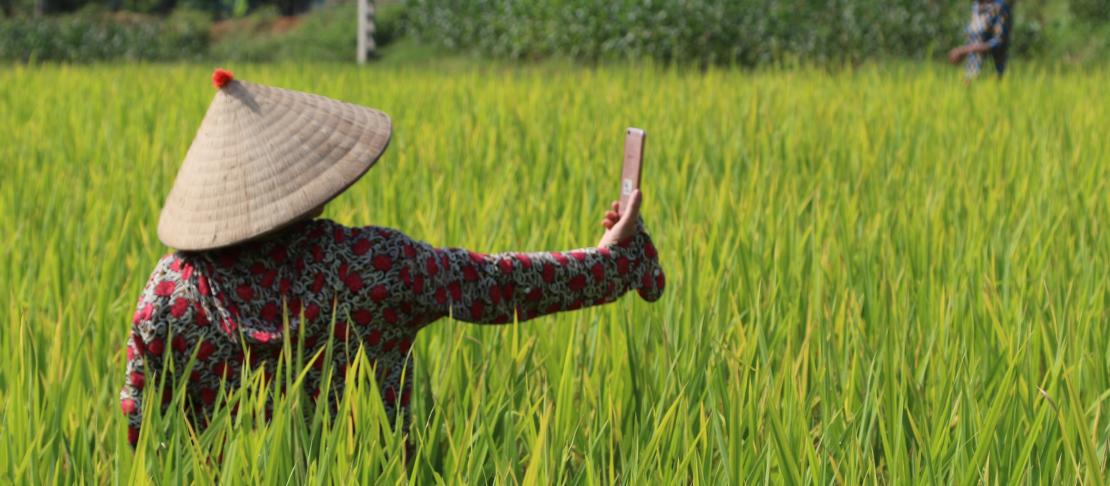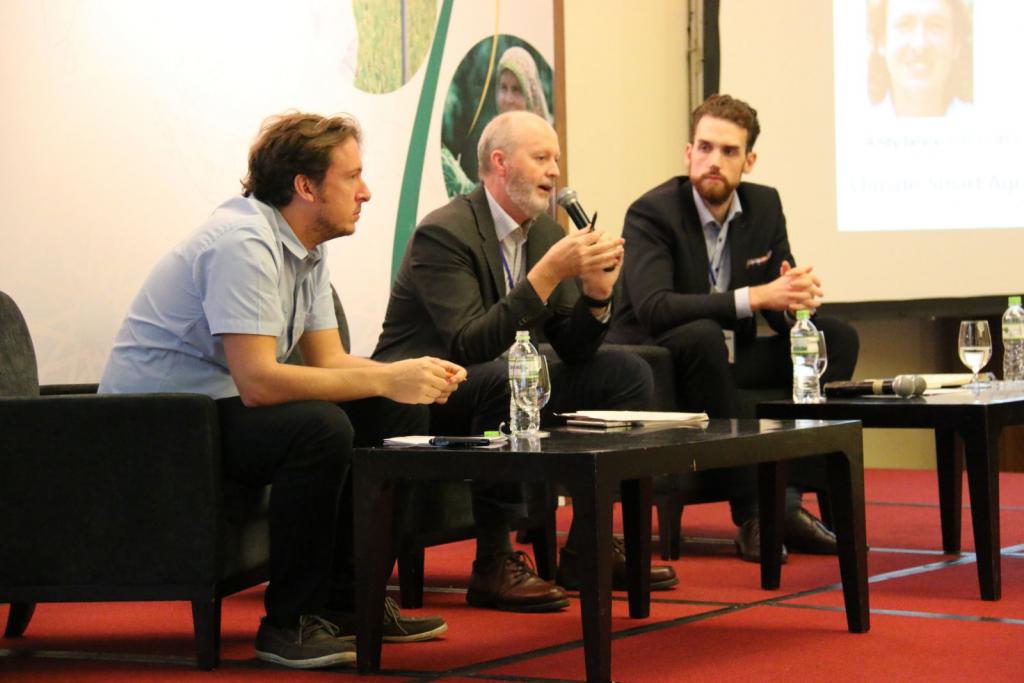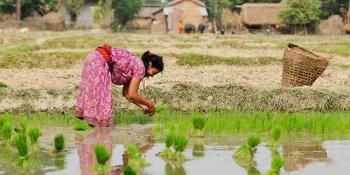What’s in store for Asian smallholder farmers in the Big Data hype?

Exporing how Big Data’s potentials can be used to enhance Asian farmers’ climate resiliency.
Smart tractors, agribots, survey drones, texting cows—these may seem like agriculture buzzwords, but with Big Data accelerating agricultural digitalization, these may soon come into fruition and be seen in farms in Asia.
What caused the hype?
The information age we are in now provided four technological milestones which paved the way for the digitalization of agriculture through Big Data.
First among these milestones is the improvement of peoples’ access to smartphones and data services. This provided opportunities for them to access agriculture information that could guide them in making farm-related decisions.
Secondly, the increased availability of cheaper smart agriculture sensors also helped farmers in monitoring their farms and adapting their practices to changing climatic conditions and environmental factors.
Another milestone that hastened the digitalization of agriculture is the improvement of the quality of satellite information and satellite images which led to better and more updated climate forecasts. Lastly, in our enhanced ability to analyse and interpret data provides better for support climate-smart agriculture (CSA) research and development efforts.
What is Big Data’s niche in CSA?
If the CGIAR Research Program on Climate Change, Agriculture and Food Security (CCAFS) succeeds in utilizing Big Data, its biggest impacts can be seen in improving the following stages in the market-value chain: planning, selecting quality inputs, on-farm production, storage, and access to markets.
In the planning stage, Big Data is deemed most useful in helping farmers decide what to plant and when to plant it. It can also be used to guide farmers in selecting high quality inputs. During production stage, applied data can potentially improve precision and adaptability of farming interventions.
Digitally warehouse receipts and digitally-enabled harvest loans may help reduce postharvest losses while they are stored. Moreover, the improved climate forecasts can also provide farmers with timely reminders and alerts on climate-related risks which are useful in monitoring farm operations and preventing yield loss.
Harnessing Big Data’s potential also enables the combination of climate forecasts with micro insurance systems to further enhance farmers’ resilience to climate risks.
Big Data can also be sourced from social media. Through this, we can make the most out of the farmers’ groups established through social media platforms, Facebook posts and tweets by using them to build information database.
During the Joint CCAFS SEA-SA CSA Workshop in Hanoi, a special panel discussion tackled the potential of using Big Data to increase agricultural productivity, and at same time manage climate-related risks. Photo: Duong Minh Tuan/ICRAF
Can smallholder farmers benefit from Big Data?
Despite the rosy picture that Big Data presents, it cannot be denied that we still have a long way to go before we can reap the benefits from it, and before these benefits trickle down to smallholder farmers. As Andrew Jarvis, one of the Flagship Leaders of CCAFS, said:
Big Data provides huge promise, but a handful of success stories for smallholder farmers.”
Dr. Leocadio Sebastian, CCAFS Southeast Asia programme leader, raised concerns on how using big data can be used further widen the digital divide. As of now, only commercial farms have access to technologies which can make sense of big data.
Unfortunately, 76% of the farmers in Asia are smallholder farmers, majority of which do not have access to these technologies. Hence, the challenge now is for CCAFS to help make it work for this 76%.
Social differentiation in access and illiteracy in using these technologies also pose a challenge in this digitalization. Thus, CCAFS should work on downscaling information from forecasts to something more comprehensible and more relevant to farmers’ context.
How can CCAFS make Big Data work for smallholder farmers?
As of now, there is an insufficient publicly available data on agriculture which can be used to build a sustainable data ecosystem that scientists, extension workers and farmers can access. Building an information ecosystem on CSA that is more accessible to people and resolving data privacy issues could help address such problems.
Moreover, building the capacity of a new generation of agricultural scientists and field agronomists to enhance their skills not only in analyzing, and interpreting data, but more importantly in providing farmers with comprehensible, personalized, and actionable information should now be prioritized.
Creating an enabling environment for establishing public-private partnerships can also help resolve privacy issues in utilizing big data and can help maximize available technologies owned by public and private sectors to further develop information services for farmers.
If these abovementioned challenges are resolved, the rosy picture of modernized, climate-smart agriculture that now seems as a hype can finally be turned into reality.
Read more:
- Climate-smart agriculture in Asia: Beyond pilot evaluations and models
- Big Data is making big impact in agriculture
- Big data, big prospects: crunching data for farmers' climate adaptation
Camille Anne Mendizabal is the junior communications specialist for the World Agroforestry Centre Philippines. She is also a communication consultant with the CCAFS SEA program.




